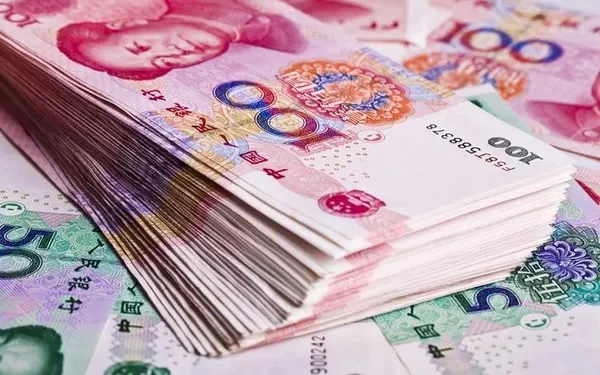The global financial landscape is ever-evolving, with exchange rates playing a crucial role in facilitating international trade and investment. Among the myriad of currency pairs, the exchange rate between the Chinese Renminbi (RMB) and the United States Dollar (USD) holds particular significance due to the economic clout of these two powerhouse nations. In this article, we delve into the intricacies of the current RMB exchange rate, with a specific focus on converting 25 Yuan to USD.
Understanding the RMB Exchange Rate
Before delving into the specifics of converting Yuan to USD, it’s imperative to grasp the fundamentals of the RMB exchange rate regime. Historically, China maintained a fixed exchange rate system, pegging the RMB to the USD. However, since 2005, China has gradually transitioned towards a more flexible exchange rate mechanism, allowing the RMB to fluctuate within a specified band determined by the People’s Bank of China (PBOC).
The RMB’s exchange rate is influenced by various factors, including China’s trade balance, economic fundamentals, inflation rates, and government policies. Additionally, market forces such as supply and demand dynamics, speculation, and global economic conditions also exert significant influence on the RMB’s value relative to other currencies, notably the USD.
Current RMB Exchange Rate
As of the latest data available, the exchange rate stands at 0.14 Yuan per USD. This rate reflects the prevailing market conditions and the culmination of various economic factors influencing the RMB’s value. It’s important to note that exchange rates are subject to fluctuations, and even minor shifts in economic indicators or geopolitical events can impact currency valuations.
Converting 25 Yuan to USD
With the current exchange rate in mind, let’s explore the process of converting 25 Yuan to USD. Given the exchange rate of 0.14 Yuan per USD, converting 25 Yuan would yield:
25 Yuan× 0.14 Yuan =3.5 USD
This calculation demonstrates the straightforward arithmetic involved in currency conversion. However, it’s essential to consider additional factors that may affect the actual amount received when exchanging currencies, such as transaction fees, exchange rate spreads, and commissions charged by financial institutions or currency exchange providers.
Factors Influencing the RMB-USD Exchange Rate
The RMB-USD exchange rate is influenced by a myriad of factors, reflecting the intricate interplay of domestic and international economic dynamics. Some key factors shaping the RMB’s valuation relative to the USD include:
Economic Indicators: Macroeconomic indicators such as GDP growth, inflation rates, employment data, and trade balances play a crucial role in determining currency values. Strong economic performance typically leads to currency appreciation, while economic downturns may result in depreciation.
Monetary Policy: The monetary policies pursued by central banks, particularly the People’s Bank of China and the Federal Reserve, have a significant impact on exchange rates. Interest rate decisions, quantitative easing measures, and other monetary policy tools influence currency supply, inflation expectations, and investor sentiment.
See Also:Current RMB Exchange Rate: What Is Yuan to Baht?
Trade Relations: Trade dynamics between China and the United States exert considerable influence on the RMB-USD exchange rate. Trade imbalances, tariffs, and trade negotiations can lead to fluctuations in currency values as markets react to changes in trade policies and economic relations between the two nations.
Market Sentiment and Speculation: Investor sentiment and market speculation play a pivotal role in short-term exchange rate movements. Perceptions of political stability, economic prospects, and geopolitical developments can trigger speculative trading activities, leading to volatility in currency markets.
Global Economic Conditions: The RMB-USD exchange rate is also influenced by broader global economic trends. Factors such as commodity prices, geopolitical tensions, and global financial market volatility can affect investor risk appetite and capital flows, thereby impacting currency valuations.
Conclusion
The current RMB exchange rate reflects the culmination of various economic factors shaping the value of China’s currency relative to the USD. Understanding the intricacies of currency exchange rates is essential for businesses engaged in international trade, investors seeking diversification opportunities, and policymakers formulating economic strategies.
As we’ve explored, converting 25 Yuan to USD involves a straightforward calculation based on the prevailing exchange rate. However, it’s crucial to consider the broader economic context and factors influencing currency valuations to make informed decisions regarding currency exchange transactions.
In an increasingly interconnected global economy, the RMB-USD exchange rate will continue to play a pivotal role in facilitating cross-border transactions and shaping the dynamics of international finance. By staying abreast of economic developments and understanding the factors driving currency movements, stakeholders can navigate the complexities of currency exchange with confidence and precision.
Related Topics:
Current RMB Exchange Rate: What Is 15 RMB to HKD?
Current RMB Exchange Rate: What Is RMB to UGX?
Current RMB Exchange Rate: What Is Yuan to AZN?


























